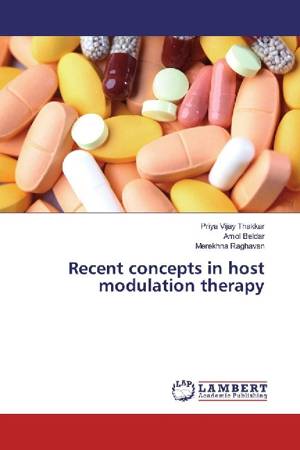
- Afhalen na 1 uur in een winkel met voorraad
- Gratis thuislevering in België vanaf € 30
- Ruim aanbod met 7 miljoen producten
- Afhalen na 1 uur in een winkel met voorraad
- Gratis thuislevering in België vanaf € 30
- Ruim aanbod met 7 miljoen producten
Zoeken
Recent concepts in host modulation therapy
Priya Vijay Thakkar, Amol Beldar, Merekhna Raghavan
Paperback | Engels
€ 35,45
+ 70 punten
Omschrijving
Periodontal diseases are initiated by Gram-negative tooth associated microbial biofilms that elicit a host response, with resultant osseous and soft tissue destruction. In response to endotoxins derived from periodontal pathogens, several osteoclast- related mediators target the destruction of alveolar bone and supporting connective tissues. Major drivers of this aggressive tissue destruction are matrix metalloproteinases (MMPs), cathepsins,cytokines and other osteoclast-derived enzymes. This book focuses on the downstream factors of the osteoclast responsible for the degradation of bone and soft tissues around teeth. Furthermore various therapeutic approaches that target MMPs, cytokines,cathepsins and other osteoclast-derived enzymes , such as MMP inhibitors, chemically modified tetracyclines, subantimicrobial formulations of tetracycline analogues, and various new agents such as periodontal vaccines, Probiotics, Grape seed proanthocyanidins, Cranberry fraction, omega 3 fatty acid, locally administered HMT agents are discussed. In addition, studies using other agents for the preservation of bone mass, such as bisphosphonates that inhibit osteoclast recruitment, are highlighted.
Specificaties
Betrokkenen
- Auteur(s):
- Uitgeverij:
Inhoud
- Aantal bladzijden:
- 84
- Taal:
- Engels
Eigenschappen
- Productcode (EAN):
- 9783659922954
- Uitvoering:
- Paperback
- Afmetingen:
- 150 mm x 220 mm

Alleen bij Standaard Boekhandel
+ 70 punten op je klantenkaart van Standaard Boekhandel
Beoordelingen
We publiceren alleen reviews die voldoen aan de voorwaarden voor reviews. Bekijk onze voorwaarden voor reviews.








